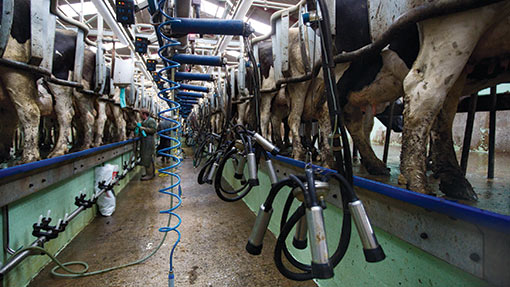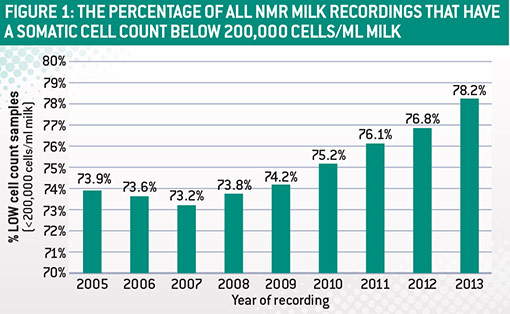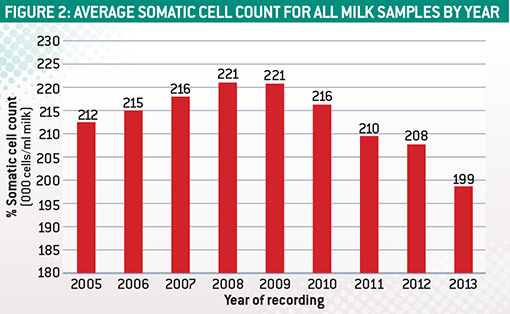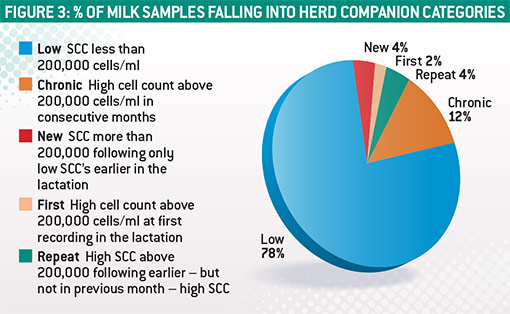Milk quality improves in UK herds

Milk quality from British dairy herds is steadily improving according to a report published by the University of Reading.
Based on an analysis of 6.6 million milk samples collected by NMR in 2013, 78.2% now have somatic cell counts (SCCs) of less than 200,000 cells/ml – an improvement of 5% in six years from 73.2% in 2007 (see Figure 1).

The average SCC of all NMR milk samples continues to fall and has, for the first time in at least eight years, dropped below 200,000 cells/ml. Now at 199,000 cells/ml, it is 22,000 cells/ml lower than the high point in 2008 (see Figure 2).

“News of lower cell counts is great for producers and the UK dairy industry as a whole,” says NMR Group vet Karen Bond. “It tells a story of improving mastitis management and udder health.
See also dairy news and technical advice
“Producers and vets are using tools to monitor both individual cow mastitis and cell count data and also to track herd level trends. This gives them a better understanding of the causes of infections and how udder health issues can be tackled on their unit and it means they can be more proactive in controlling problems.”
In the past three years, Mrs Bond has seen more evidence of producers using specific cell count data to create bespoke action plans using tools such as the DairyCo Mastitis Control Plan.
“The improved recording and monitoring tools have no doubt helped producers manage cell counts,” adds Mrs Bond. “The overall benefit is improved cow health and welfare, which is fundamental to the success of our dairy industry – healthy cows will produce milk more efficiently and are likely to have better lifetime performance. I think SCC data can really be a good indicator of the progress of our industry at farm level.”
However, Mrs Bond highlights data from the analyses which shows that chronic cows – those with consecutive SCCs above 200,000cells/ml – still make up 12% of all milk samples (see Figure 3).

“Overall, the number of chronically infected cows in our herds has come down but they still remain a problem and cannot be ignored. These chronic cows will often not respond to treatment, even lengthy or repeated treatments, and a decision must be taken to cull them not only on economic grounds but also to remove them as a source of infection for other cows.”
